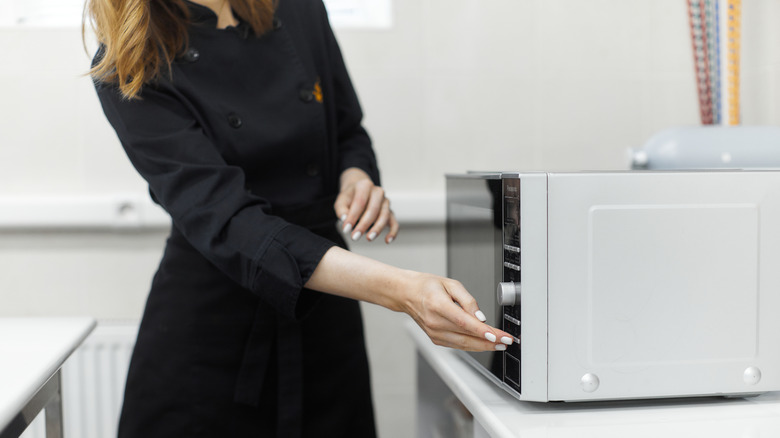Is It Possible To Proof Bread Dough In The Microwave?
If you've tried to follow any recipe for baked goodies that contain yeast — croissants, bread, rolls, or focaccia — you've probably read that you need to proof the dough. Proofing is a key step that helps certain baked goods become airy and light.
Proofing occurs when yeast feeds on carbs and releases gas that results in the visible rising of the dough; it's the final step before the pie is baked, instructs MasterClass. A final proof lets dough chill out and relax before baking begins, but the right circumstances are required: Temperature should be around 100 degrees Fahrenheit, the humidity needs to be "just right," and enough time needs to pass for the dough to expand and achieve that "springy-to-the-touch" consistency (via Bakerpedia).
Shoving your dough into the oven without proofing it can result in a less chewy, more densely baked outcome. And when certain recipes call for an hour or more of proofing, we totally understand the need for shortcuts. So, can a microwave be the answer?
A proofing shortcut
Busy bakers, we have good news for you! According to Trusted Reviews, a microwave can come to the rescue if you don't have a perfectly warm environment to proof the dough you've worked hard to make. Place it into a bowl and cover it with a buttered or oiled plastic wrap, then set this bowl into a dish partially filled with warm water. You can "cook" the dough for 10 minutes on the microwave's lowest setting, checking to see if it has expanded in size.
Alternatively, if you're working on a second rise, set the dough into a non-metal pan, cover it with greased plastic wrap, and place it into the microwave for five minutes. The key here is to use the absolute lowest setting, so you don't overproof your creation. If the dough has been proofed for too long, it will lose that coveted springy effect after you poke your fingers into it. If this happens, MasterClass instructs you'll need to once again knead, reshape, and proof it before baking. It's a tricky art. Good luck out there! And take care of your dough.

